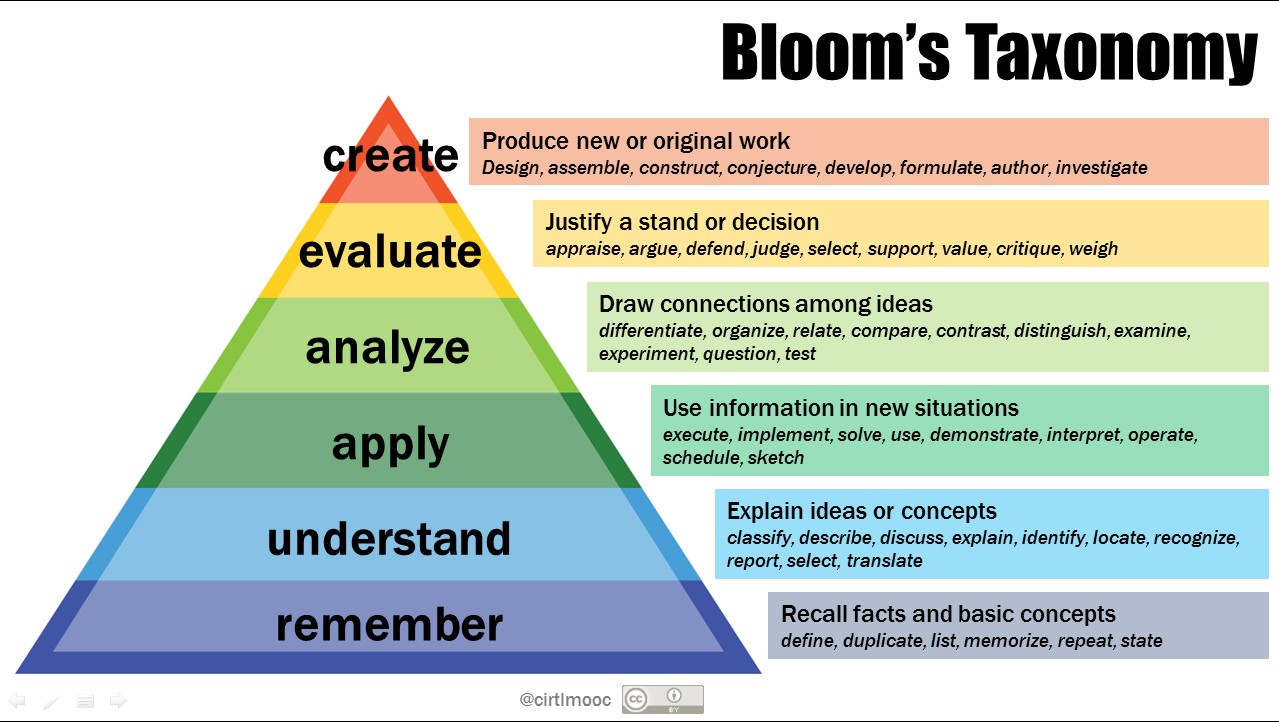
When scrolling through my Facebook account the other day, this display came up. As we had just had lectures which involved Blooms Taxonomy, this made me intrigued to know more about it and what skills are used in Blooms Taxonomy.
Bloom’s Taxonomy was created in 1956 by the educational psychologist Dr Benjamin Bloom in order to promote higher forms of thinking rather than just remembering facts.( Nwlink, 2015)
There was three domains of educational activities of learning identified, they were:
Cognitive- mental skills (knowledge)
Affective- growth in feelings (attitude or self)
Psychomotor- manual or physical skills
They made the Blooms Taxonomy triangle by working with the cognitive domain. They came to the conclusion of six major categories which are:
- Knowledge
- Comprehension
- Application
- Analysis
- Synthesis
- Evaluation
These are the ones seen on the pyramid:
Also when looking at this classroom display, I was trying to thinking back to the lecture on classroom management. One thing with this display is that it is basically just giving information, its not interactive so I think that it is unlikely the children will engage much into it unless the teacher uses it a lot in their lessons. Overall I’m not sure apart from giving information what this display would be for and whether the children would use it. At first it comes across colourful but after it being there for a while would the children actually engage with it or not. I’m not so sure.
References
Image 1:https://www.facebook.com/twinklteachingresources/posts/10153474360515028:0
Nwlink http://www.nwlink.com/~donclark/hrd/bloom.html
Image 2: https://cft.vanderbilt.edu/guides-sub-pages/blooms-taxonomy/






